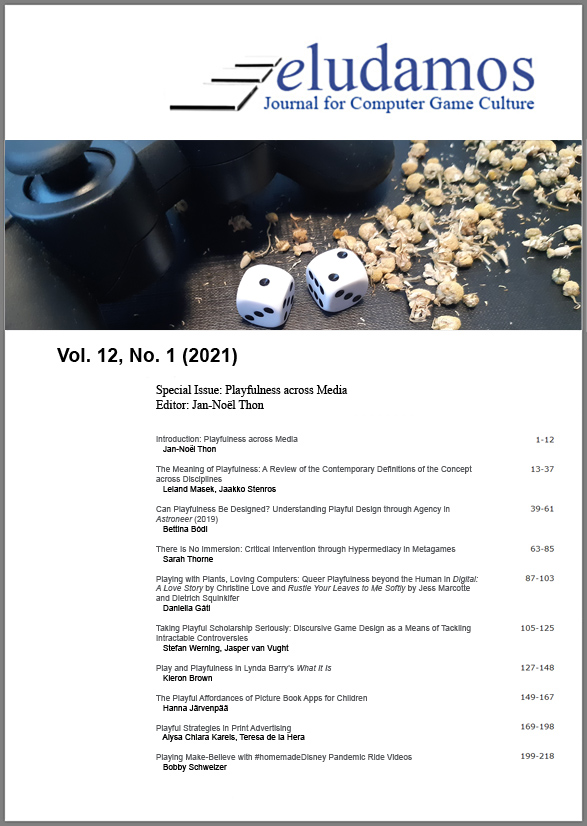Playing Make-Believe with #homemadeDisney Pandemic Ride Videos
DOI:
https://doi.org/10.7557/23.6368Keywords:
disneyland, disney world, imagination, make-believe, memes, play, theme parksAbstract
In response to the closing of the Walt Disney theme parks at the beginning of the COVID-19 pandemic, fans of Disneyland and Walt Disney World produced videos re-creating their favorite rides and attractions for a viral social media trend dubbed #homemadeDisney. The typically short (usually 30–90 seconds) videos from #homemadeDisney turned ‘guests’ into ‘cast members’ (staff) and smartphone owners into living room ‘imagineering’ ride designers. Participants engaged in a form of shared make-believe (Walton 1990) by assembling household objects as props, improvising ride elements, and performing as theme parkgoers for one another. The extensive collection of social media videos analyzed for this article reveals how fans interpreted attractions through a shared mimetic grammar (Milner 2016), the ride aesthetic (Telotte 2008), and the playful nature of the theme park experience.Publication Facts
Metric
This article
Other articles
Peer reviewers
0
2.4
Reviewer profiles N/A
Author statements
Author statements
This article
Other articles
Data availability
N/A
16%
External funding
No
32%
Competing interests
N/A
11%
Metric
This journal
Other journals
Articles accepted
12%
33%
Days to publication
20
145
Indexed in
-
—
- Academic society
- N/A
- Publisher
- Septentrio Academic Publishing
Downloads
Published
2021-09-14
How to Cite
Schweizer, B. (2021) “Playing Make-Believe with #homemadeDisney Pandemic Ride Videos”, Eludamos: Journal for Computer Game Culture, 12(1), pp. 199–218. doi: 10.7557/23.6368.
Issue
Section
Perspectives








